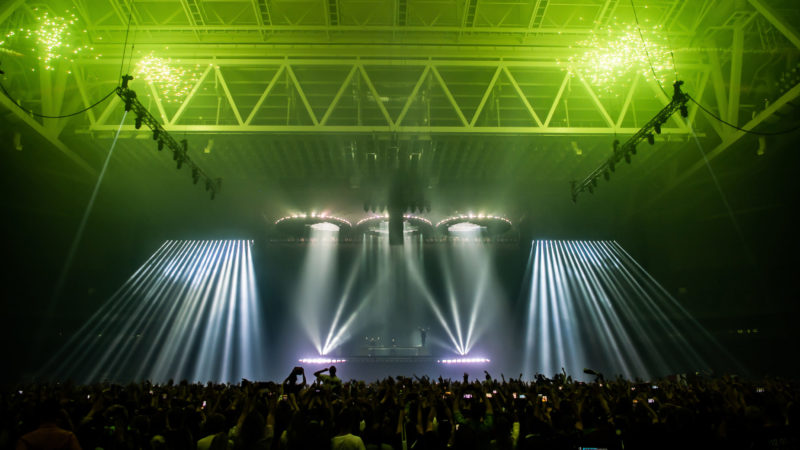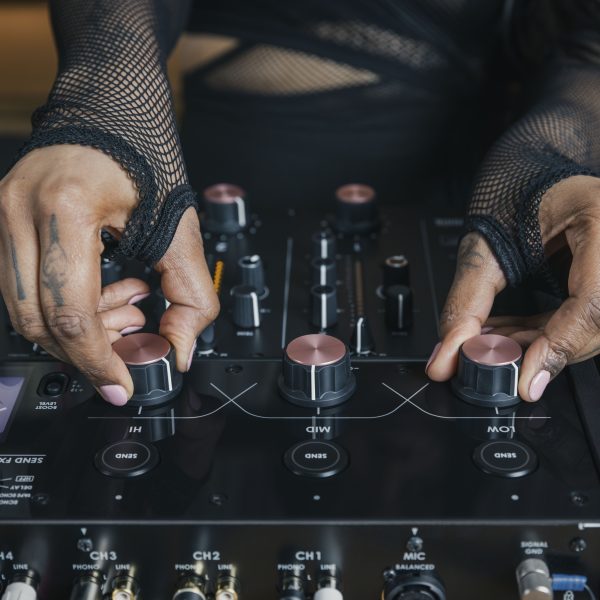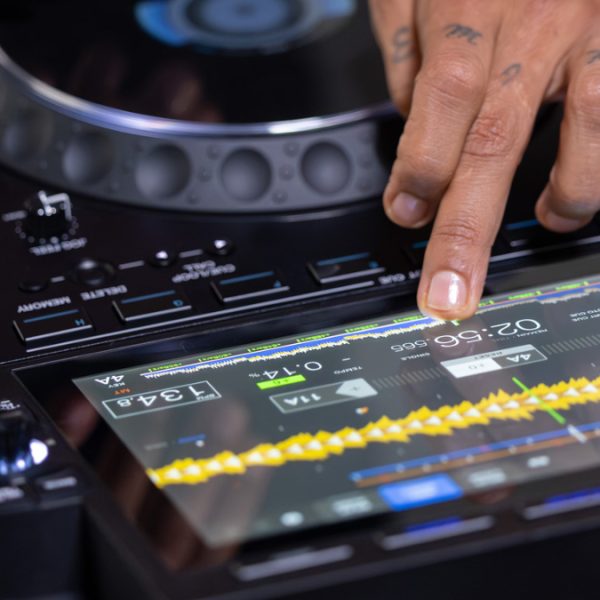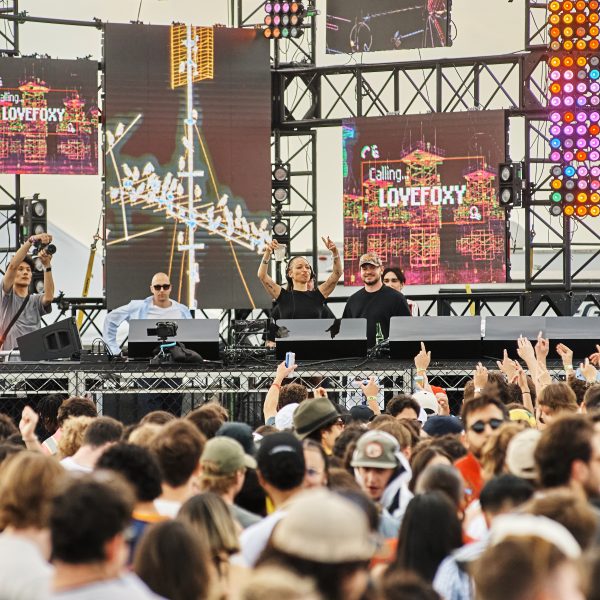Can you tell us a bit about your background?
I grew up in Suffolk, in the UK, where you can either be a farmer or in the building trade. From there I ended up going to Nottingham Polytechnic, as it was called in 1986, and basically the Polytechnic had a really good student union that had three different venues.
One was about 300 capacity, one was about 800, the other maybe 1200. And they had their own audio system, lighting, staging. The students did all the posters, security, staging, loading in—everything. So I basically just started saying, “Oh, this looks fun. What are you doing here? How can I help out?”
I started helping out, and within two years I ended up running the audio department. Every Monday night we’d have shows there, which at the time would be bands like Radiohead, Manic Street Preachers… Downstairs we’d have things like Lenny Kravitz, Nirvana’s first tour of the UK.
So I learned about desks, systems and got thrown behind the monitor desk and started mixing and then doing front-of-house. So it was basically like a hobby that turned into a career. I fell into it by mistake. So it’s all practical knowledge, really. And then from that I ended up working for an audio company locally and for a group of DJs called DiY, who were Nottingham-based underground DJs. We’d make monitors for those guys, and used to go and set up raves for them.
We did all these big shows at the Marcus Garvey centre in Nottingham, which was about 3 or 4,000 people. They were all-nighters there, it was good fun. So I’d look after the decks, look after the sound system. We’d just put loads of speakers in. We had bass bins from one side of the room to the other [laughs], and then separate speakers all the way up, which were all individually plugged in with XLRs.
Back then it was different, really. You were just making sure everything was plugged in and everything was in phase. Make sure that all the speakers were going in the right direction and at the right time. And at that time obviously it was vinyl. So when you put the needle on the record making sure nothing was feeding back. We had to isolate the decks, make sure that was OK. You had to EQ the system to make sure it was heavy enough but also wouldn’t disturb the DJ playing, and then take care of each DJ going on making sure everything was OK. From the decks point of view, swapping out mixers, anything like that, swapping out decks if they went down and just basically getting the best out of the system and helping the crowd have the best time. So that’s how I cut my teeth.
Later I worked at the Millennium Dome for a while, and we did some big New Year’s Eve parties there for DJs, which was great. And then I started freelancing. I got a job with DJ Shadow early on. I travelled the world with him, and then at a similar time, Jurassic 5. They were both DJing on vinyl at the time.
Those days were quite different. You’d go into venues doing rock and they wouldn’t really be thinking about the relationship between the decks and the room and the vibration. So having to say, “Right now, you can’t have the sub[woofers] on the stage because that oscillates the whole stage.” So I’d have to go in, rebuild sound systems, re- time align them, get all the decks set up properly. And that was the gig, really. Obviously you were doing front-of-house.
It was kind of like mastering: ensuring that your artist is getting their music going out to that crowd exactly how they want it to be. So you’d be tuning sound systems, making it sound great, not making it feed back and getting the best out of it. So it’s almost like designing a system and then mastering it at the same time. All you’d be playing around with a lot of the time is those two main channels, but it’s actually just caring about it. A lot of people think, “Oh, it’s just the DJ. I’ll put a compressor on it, turn on the high-pass filter and go to the bar.” [laughs]
So I got a reputation for being able to do that and to care about it. Then I had a residency at fabric doing fabriclive on Friday nights. So I used to do a lot of DJs there. So I’ve always had a backbone in dance music.
As the years went by I started working with the likes of Swedish House, Avicii, Alesso, David Guetta, Calvin Harris. Then obviously we entered the time of CDJs and different equipment. So I’d be encouraging DJs saying, “Come on guys, let’s get rid of those MP3s. Let’s get some WAVs!” [laughs].
Halfway through the 2000s we started getting a lot of digital consoles coming on the market, so everything became digital and digitised. So we started processing things differently using different outboard equipment, but it still came down to the same thing: it’s all about the system design and about how you process the sound.
These days I use a lot of SSL equipment, a BUS+ and a Fusion. Before I used to use a lot of other equipment as well for processing and mastering a stereo signal clearly. Some people would say, “Oh you only mix two channels, mate! Left and right” And I’d be like, “Well yeah but you could say that for the whole of the mastering industry.” [laughs].
So what we’re really doing is taking all those mastering techniques and putting them in a live domain, so that your DJ sounds better than any other DJ. That was my idea: trying to make whoever I was working for sound better than anyone else… I think I’ve managed to do that fairly well.
You don’t want to take away from the music and overproduce things as well. You’ve got to design a system making sure there’s just enough sub going on and also a nice balance so that it’s not covering anything farther up the audio spectrum. You can almost overdo it sometimes. I’ve heard mixes of people when they start compressing it, and they’re listening to it going, “Yeah, that’s great.” But you’ve just lost all the intelligibility out of the music. You can’t really be compressing already compressed music.
What are the kinds of things you need to think about in terms of working with DJs?
So basically from a DJ point of view, it would be setting up whatever decks they’re playing on. If it’s Technics 1210s, obviously balancing the decks, making sure they’re level, making sure there’s no vibration or oscillations at the needle. Also setting the mixer up correctly so that the outputs don’t clip and there’s enough headroom in there. You’d then do some of the same things with the CDJs, making sure everything is working.
On a mixer like the [Pioneer DJ] V10, you can save all your settings on a USB, which is great. I’d always go into the custom interface and set up my output level, reduce that by quite a lot so that the mixer doesn’t overload. So just making sure all your equipment works properly. I tend to plug everything in digitally and in analog. So if anything goes out, say if the digital just drops out, you can just switch it over signal and you’re still good.
From a stage point of view, just making sure all your cabling is as good as it can be. That your mixer is set up so that it’s driving optimally, but not too much so that if you start cranking things up you’re getting into distortion. Sometimes, like with Calvin Harris, we have a dedicated monitor engineer.







